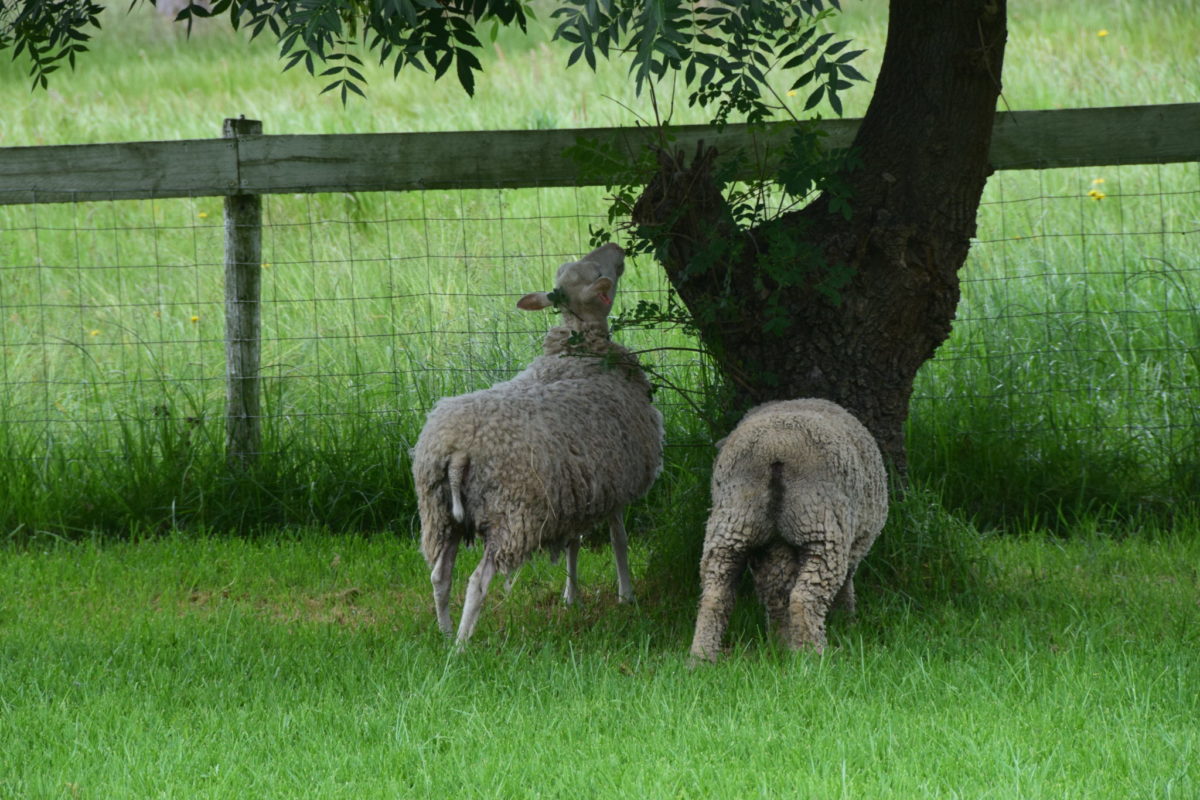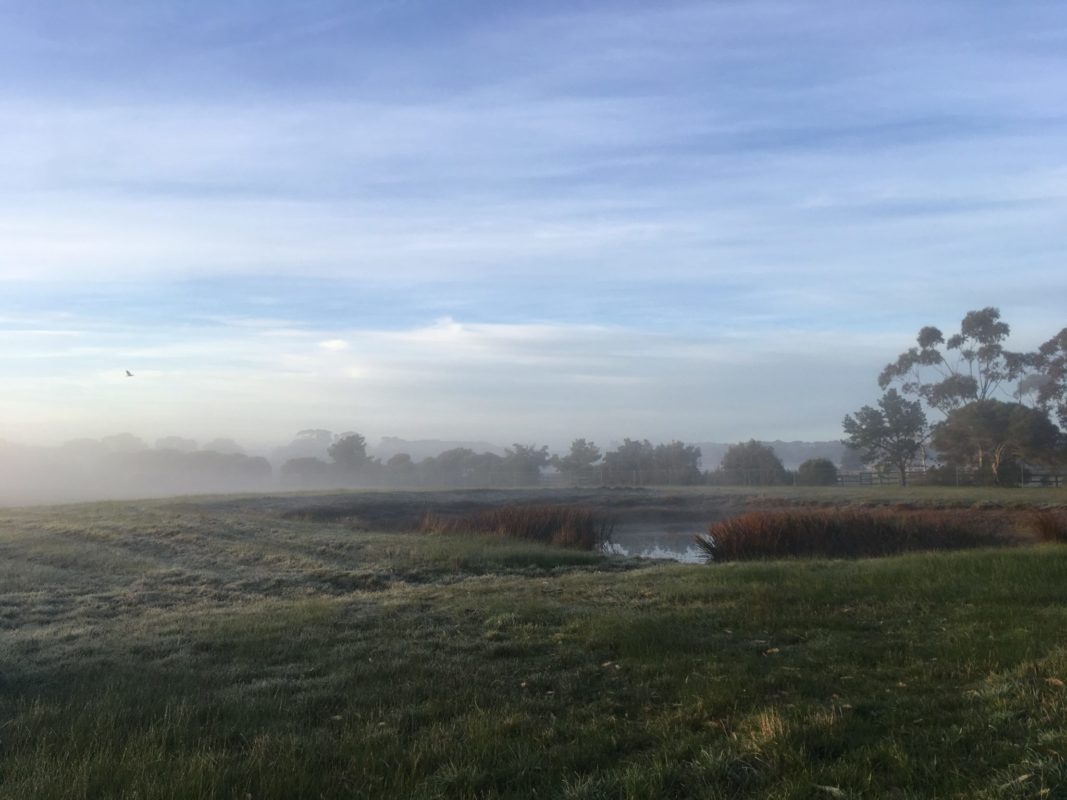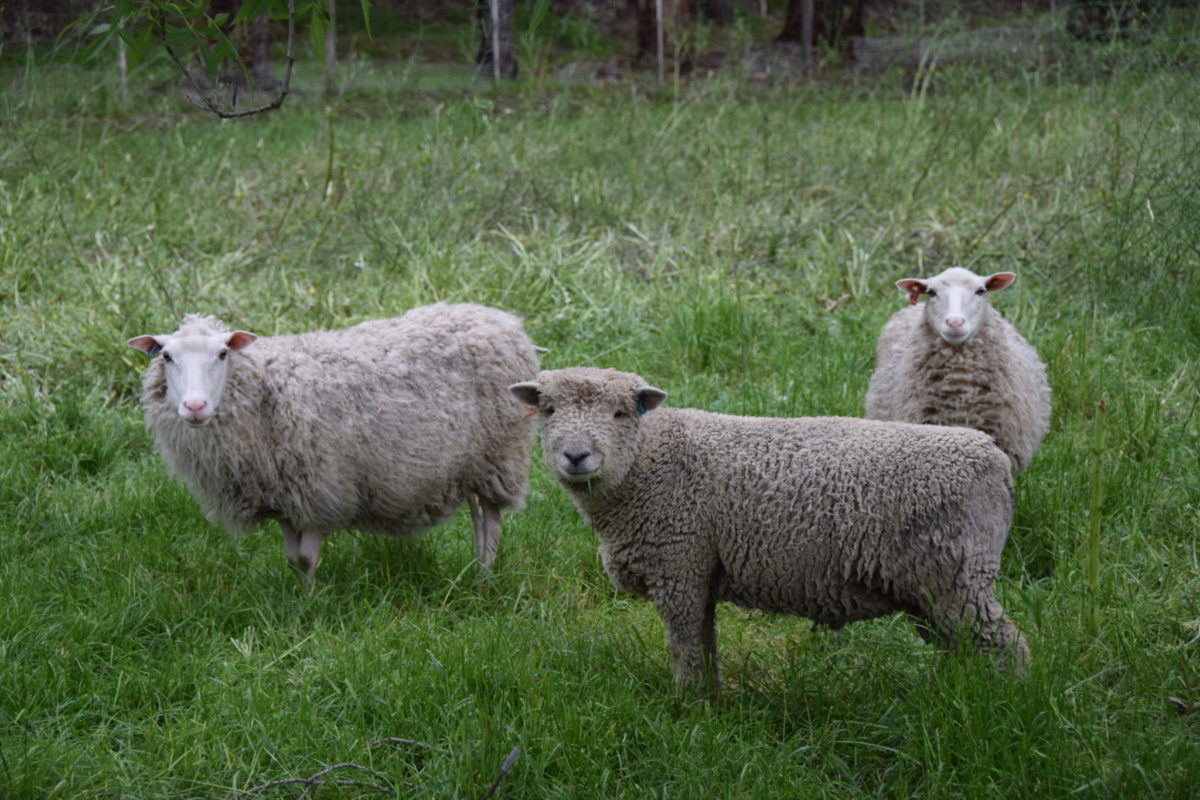I’ve posted before about our Finn ewes, and our Babydoll Southdown ram. And I’ve mentioned that we are hoping to breed Finn-Babydoll Southdown cross. Once we have our F1 generation, we want to choose the traits we are interested and continue breeding until these traits are genetically stable. Eventually we’ll use our new ‘Heritage Sheep’ to graze beneath our vineyard and orchard.
Well. It sounds very simple when I type it like that, but in reality, it’s quite an experimental breeding program. It might be a total disaster. But I’ve done enough research to think it’s got a good chance of success. I believe it will take a minimum of 4 years. And it depends on access to good breeding stock, good choices and following conservation breeding principles.
Since Finns are the larger of the two sheep breeds, we’ve decided to use Finn ewes, to create the Finn-Babydoll Southdown cross. By using the smaller Southdowns as the rams we should have easy lambing. This gender split also means that we can take advantage of the Finn’s fertility, giving us a huge F1 generation, with only half a dozen ewes. This is really important- it speeds up the breeding program by giving us lots of diversity to select from early. Finally, the Original, or Babydoll Southdowns are hard to find, and harder to purchase. There’s a three year wait for ewes from reputable breeders.
From the Finns
1. Short tails and clean breech- This is to eliminate the need to dock tails, reduce the possiblity of fly strike, and so reduce the extra crutching maintenance.
2. Nice wool- Finns have a medium wool with a micron count from 24 to 31 (50s) and a staple length from 3 to 6 inches. Finn wool is also lustrous like some longer wool breeds, without the accompanying coarseness. You can wear lamb wool from Finns next to the skin it’s so soft.
3. Fertility- Twins and triplets are the norm from Finn mothers, with higher mutiples also possible. We’ll be aiming for triplets as the Finns are good mothers to three, but four or more lambs require bottle feeding at least one baby.
From the Babydoll Southdowns
1. Size- The main characteristic we want from the Babydolls is their small size. This enables our resulting sheep to graze under vineyards and orchards year round.
2. Dark nose and skin- This is to increase the resistance to sun damage and skin cancers as the sheep age. We want our sheep to have good, long lives!
3. Meat and carcass quality- inevitably, in a breeding program you have to cull animals. It’s the only way to select for the traits you want- get rid of those you don’t want. We want our cull animals (and eventually, our spare stock) to have a good quality carcass.
We will also, as much as possible, select our breeding animals from those that show resistance to foot rot (important in our wet paddocks) and parasites, as well as a friendly disposition. We’ve always heard that the only place for a nasty ram is in the freezer. At $625 that seems pretty harsh, but we don’t want to have a beautifully bred new breed, with an aggressive disposition. Luckily so far Finnegan has been charming! Now he just has to get down to business!
Will this work?

Well, first of all I should fess up and say that as primary researcher, if it doesn’t work, it will definitely be on my decision making, not Matt’s. While Matt is interested and supportive, the genetics side of things isn’t his forte.
Phil Rutter suggests that selecting for more than 2 traits at a time makes breeding work exponentially more difficult. Now, he is talking about selecting for traits within hazelnut populations, so there are challenges he faces that we don’t. His generation gaps are far larger, with each new plant taking 6 years to go from a seed, to producing a seed. We can breed our sheep at a year old, getting 4 generations of the Finn-Babydoll Southdown cross, in the time he gets one generation of hazelnuts. Another of his challenges is that hazelnuts are wind pollinated. That means that while you can be certain of the “mother’s” genetics, the fathers’ gene contribution is completely random. We carefully select our rams.
Despite these differences, he still makes a very good point. The more traits you look for in one generation, the harder it is to find your next breeders. So, we will be prioritising short tails, and small sizes in our F1 generation. And slowly work on further selections when we have the opportunity, and once those traits are established.
I’ve done quite a lot of research, from speaking to other, established breeders, to studying peer reviewed journal articles. I think that we have a pretty good chance, although it will definitely take time.
Interested in learning more?
I’ve listed some references below to have a look at if you’re interested in learning more. Or you can, of course, always contact us directly.
-Overall breed size is strongly influenced by ram selection.
-Tail length, and skin vs wool on the tail has also been shown to be highly heritable (.77) in crosses of Finns and Merinos. This is because it’s controlled by only a few genes.
-Selecting for wool quality can certainly be done, but it will be a slow and difficult process.
-A number of sources regarding selecting for worm and parasite resistance here, here, and here.



How are your finn x babydolls? I am trying same thing
Pretty positive results so far, Dawn! How about you? Have you had a few generations so far?
I’d sure love to hear more on the topic!
Hi Kathryn,
Thanks for your comment. We’ve had a few really great results from our program. Unfortunately we’re moving on from the farm, so the flock is likely to be disbursed shortly! We’ll try and post an update for the blog before they go 🙂
Matt
As of May 5th 2021, how is the breeding program going? How many lamb crosses have come out of it? Pictures would be welcomed. I have the possibility of getting an Old English Babydoll ram lamb who is beautiful black/brown color. And have to drive a ways to get a Finn ewe, but it is also possible. I love Finns, but I’ve heard hybrid vigor is also something to consider. Just wanted to know whether it was possible or if I needed to wether the ram lamb to keep as a pet. Thank you.